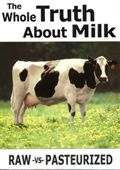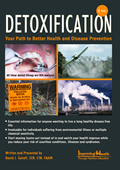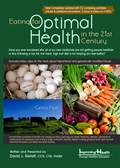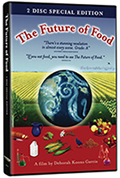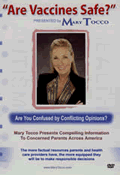THE NARROW SCOPE OF FLU VACCINE USEFULNESS
By
Byron J. Richards, CCN
September 9, 2009
NewsWithViews.com
Let’s assume for the moment that a textbook H1N1 swine flu vaccine is actually produced. Let’s put aside our concerns about its potential toxicity, adverse side effects, or the difficulty in getting a vaccine that actually looks like the current flu problem. And let’s focus on a more fundamental question: Would such a vaccine work for you?
Our public health officials seem to think that a vaccine is the answer to the swine flu or any other potential flu that could come along. The public version of vaccine theory is quite simple; a vaccine gives your immune system a heads up on what is likely to come around so that you are better able to mount an immune response if the real villain actually shows up. Such a rudimentary presentation of immunity to the general public is more fairy tale than fact.
A vaccine is essentially a tool for improved recognition of a specific virus. It is like having a surveillance system on your home that has been tweaked to profile the specific look of a known criminal. Sure, that’s nice. But is it needed? After all, humans already have the highest-powered surveillance system, one that has been dealing with viral infections since time immemorial, which is one reason why we as a race have managed to survive. Once again, for the sake of a focused discussion, let’s assume that the vaccine is important in its surveillance role and has value as an upgrade to your surveillance system.
OK, there you are in your home and your security alarm sounds. Your surveillance system has detected a criminal invader, in this case with the help of a vaccine. Now what are you going to do?
Maybe the invader is a smart one, the kind that knows how to cut your phone lines and jam your cell phone so you can’t dial 911 (a nasty pandemic type that confuses your dendritic cells). Maybe you’re starting to think you should have taken those self defense classes. Is there a gun in the house? Do you even have ammunition? Do you know how to use it? Are you going to be involved in hand-to-hand combat? Or would your immune system rather sit around and talk about the glory days while you hide under the bed?
My point is rather simple, just because your immune system happens to see something is no guarantee that it has the ability to do something about the problem.
Vaccine Failure is Common
Let’s connect this analogy to the real world of our often-vaccinated elderly population, the group that always suffers the most flu-related deaths in any one year. In this group we can make two broad divisions: the healthy elderly and those in a state of clear decline.
Those in a state of clear decline are at the mercy of their invader. They are often protein malnourished, antioxidant depleted, and in a state of locked-in inflammatory decline. This means their battlefield is already littered with trash, their supply lines have run dry, their guns are rusted and jammed, their ammunition is lacking, and food for the few troops that remain is in short supply. Seeing an invader “better” is essentially meaningless. Their only real hope is that a truly nasty invader doesn’t come calling. And this is why the flu or its pneumonia-related secondary infections kill so many elderly people every year.
Normal healthy aging is associated with a significant amount of physical wear and tear. This is also a potential handicap to efficient immune function. Researchers have known for a long time that the ability to fight infection declines with age.
Inefficiency in the high-powered adaptive immune response (cell-mediated immunity) is common in the elderly. This is marked by a lack of mature T cells (CD3+), and instead too many immature T cells (CD2+ and CD3-), which is like having too many poorly trained troops and not enough energy to send them to school to finish their education. At the same time, the elderly immune system is marked by a lot of storytellers (memory T cells) at the expense of immune cells that need to get to work clearing out infected cells (CD8+subsets – killer T cells). Researchers have shown that if a healthy elderly person is lacking vitamins and minerals, then these changes in T cells translate to an impaired immune response.
One study involving 233 healthy seniors found that following flu vaccination there was a 51% rate of malfunctioning front line immune troops (innate immunity) and a 70% rate of defect in the higher-powered immune response (adaptive immunity). The researchers believe this is the reason that flu vaccines only work in the elderly 30% - 50% of the time.
Part of the problem of aging is a cumulative antigenic load that helps provoke ongoing inflammation (especially when combined with stress and/or obesity). When the front line troops of your immune system (innate immunity) engulf and destroy an invader it is broken down into pieces, called antigens, that are presented to your high-powered immune system (adaptive immunity) so that antibodies can be produced that will bind the antigen as part of how your body destroys an infection, including the flu. Antigens also get various innate immune cells making inflammatory signals as part of this natural process. There are many foreign antigens that are not infectious (such as pollen) and the wear and tear of body tissue can sometimes form antigens (promoting an autoimmune response).
Over the course of one’s life this antigen load tends to be ever increasing, in turn provoking innate immune cells to dwell in the inflammatory mode. The decline in this function parallels your decline in stress tolerance, a key symptom of excess antigen load with concurrent inflammation. Scientists believe that this problem causes a “weakened host” that is more susceptible to an infection gaining a toehold and causing problems. It could be said that a more aggressive inflammatory response in younger years is needed to help battle various infections. However, if a person survives into older years then the cumulative burden of excess inflammation is a clear immune system handicap. This means the elderly must be very good at managing wear and tear of all types (definitely don’t sweat the little things).
Yet another study showed that giving the flu vaccine to elderly individuals with documented pre-existing viral-related inflammation (a common problem in the elderly) simply made the inflammatory problem worsen, thereby further reducing the person’s ability to fight the flu.
The most recent study reviewing the reasons for vaccine failure in the elderly points out that simply testing antibody response (antibody titers) to a vaccine to predict its effectiveness, the current “gold standard,” fails to identify the large number of seniors that are unlikely to respond to the vaccine due to age-associated defects in their immune systems.
Science clearly shows that the elderly immune system is akin to many old soldiers sitting around the table that prefer to talk about old war stories. They would rather sing Glory Days than the Marines’ Hymn. There is limited wherewithal and very little desire to fight any new battles.
Even in the very healthy elderly there is a tendency towards impaired immune function which results from the wear and tear of a lifetime. Then there is a sliding scale of immune system inefficiency that directly parallels the health status of the individual. As an elderly person moves more towards a lack of general fitness, in the direction of frailty, the degree of compromised immunity increases.
To make matters worse, many medications commonly taken by the elderly add to the problem. It is now a proven fact that antacids and statin drugs increase the risk for pneumonia in the elderly. This means that if an older person gets the flu, they are more at risk for getting s secondary serious infection which is often what actually kills them. Common drug use places them in harm’s way. This is one main reason why the purported benefits of statins to reduce mortality are readily offset by the number of people dying from infection while taking them. In fact, any medication taken by an elderly person that induces fatigue as a side effect will reduce the function of the immune system. Is it any wonder that faith in Western medicine is in a state of rapid decline?
On the other end of the age spectrum are children, whose immune systems have not had enough schooling for flu vaccines to work well. This was confirmed in a detailed analysis of the 2003-2004 and 2004-2005 flu seasons in three counties across the U.S. Researchers could not prove in children ages 6 months to 5 years of age that the flu vaccine was effective compared to not having one.
Wildly False Claims of Reduced Mortality from Flu Vaccines
There are a number of weak and slanted studies, which have been highly touted in the media, claiming that the flu vaccine has reduced all-cause mortality in the elderly by 50%. However, a detailed study that controlled for bias and confounding variables has found this not to be the case.
The researchers state, “While such a reduction in all-cause mortality would have been impressive, these mortality benefits are likely implausible. Previous studies were likely measuring a benefit not directly attributable to the vaccine itself, but something specific to the individuals who were vaccinated—a healthy-user benefit or frailty bias. Over the last two decades in the United Sates, even while vaccination rates among the elderly have increased from 15 to 65 percent, there has been no commensurate decrease in hospital admissions or all-cause mortality. Further, only about 10 percent of winter-time deaths in the United States are attributable to influenza, thus to suggest that the vaccine can reduce 50 percent of deaths from all causes is implausible in our opinion.”
Another study detailing the health records of one health insurer for nine flu seasons confirms that the 50% reduction in all-cause mortality is wishful thinking. Once all bias and confounding variables were controlled for, there was a 4.6% reduction in all-cause mortality, far below the 50% bogus claim.
A Dangerous and Slanted Public Health System
The public health system in the U.S. and around the world requires blind faith and herd mentality in order to achieve the limited “success” of any vaccination program. Public health measures are never in the best interests of any one person. The logic is always about the greater good for all, based on the rather flimsy assumption that a vaccine that matches the invader is always for the greater good.
Such rationalizations make injury from vaccines acceptable as collateral damage. The blind faith that is required for such campaigns is of course questioned when there are serious side effects affecting many of those participating, as was the case in the last swine flu vaccination effort in the 70s.
Since it is quite true that if the population in general has a better immune response to the flu it will be in the best interests of everyone, you would then think that our government would be interested in identifying those who are not likely to respond to the flu vaccine and figure out how to help them respond better.
In the scientific sense, this would require testing of an individual’s immune cell ratios to determine who in the population has the pattern of immune inefficiency associated with the risk for vaccine failure. Of course, this would make the ridiculously expensive vaccine campaign even more expensive, a cost that the government does not want to undertake. They would rather shoot first and ask questions later.
On the other hand, as pointed out in many of the study links in preceding sections, adequate nutrition can go a long ways towards correcting the age-associated decline in immune system function. The science is clear enough that many basic nutrients are vital for a healthy immune response in combating the flu. This includes adequate dietary protein, B vitamins, vitamin A (and carotenes), vitamin C, vitamin D, vitamin E, and zinc. I’m not talking about the plethora of fancy immune boosting nutrients that are also available; I’m simply taking about Nutrition 101, something you would think our government and the FDA could understand.
For example, zinc is woefully lacking in the elderly population. Even a marginal zinc deficiency has a deleterious effect on elderly immunity, causing inherent age-associated immune weaknesses to magnify (zinc deficiency is proven to decrease vaccination response). Zinc supplementation has been shown to restore the vigor to immune cells that must deal with the stress of combating an infection. Zinc has been proven to offset the excess inflammatory pattern that is a key part of the elderly defective immune response.
New research on zinc shows that zinc adequacy primes immune cells, even in healthy people, to be more efficient if and when the flu is encountered.
It is obvious that zinc, as well as other nutrients, especially vitamin C and vitamin D, are vital to basic immune function and could drastically reduce the severity of any flu in the general population. Interestingly, they would significantly help any government vaccination campaign work better. So why doesn’t our government tell people to take basic nutrients to reduce their flu risk and improve the overall public health?
A book could be written answering that question. The bottom line: our government mistakenly thinks it would lose its grip on herd mentality. Profits for the flimsy paradigm of Western medicine would be shaken at their core. Vested interests with a stake in maintaining the status quo want to keep things as they are, even though doing so needlessly kills Americans and makes their own vaccination programs less effective.
Western medicine, acting alone, is a dying paradigm. Vaccines as the ultimate solution to a serious infection are the pillar of this dying paradigm. There is no need for you to die along with these stale ideas, turning a blind eye to the obvious science.
Granted, I have a bias against flu vaccines and I have never had one – and I don’t ever get the flu. I would reluctantly consider one if I thought it were safe and if I thought it were effective and if I thought the flu virus coming around was a vicious killer of healthy people (which the current swine flu does not appear to be). And because of my general nutritional adequacy, I am the type of person most likely to benefit from such a vaccine. On the other hand, because I do not get a flu vaccine each year does not mean I am working against the greater good. To the contrary, by being healthy I am contributing to the greater good by making sure I am not part of the problem.
Understanding Your Personal Flu Risk
While many of you reading this are not in the elderly category, the underlying message is of immense importance to you. You should understand that it is the PROCESS OF AGING or the INCREASED RATE OF AGING that is detrimental to an efficient immune response. This process or rate, which is inflammatory driven, can be happening to any person at any age when their stress-tolerance check book does not balance. It is all too common that following a period of high stress a person looks in the mirror and says “Wow, I’ve aged ten years.” And in direct proportion to the amount of such internal feelings of wear and tear and external visible signs of wear and tear – the efficient function of your immune system is reduced and your risk for getting the flu increases.
The CDC has already warned that obesity is a risk for the serious swine flu. Why? Because being overweight is highly inflammatory, especially if you are currently gaining weight. Likewise, too much stress is highly inflammatory. These factors can give you an “elderly-like” immune response problem.
This could be a short duration issue due to acute challenges (excess pressures of one type or another) or it could be due to a longer-term wear and tear trend in your health or both.
The inability to efficiently recover from stress is the key sign of risk for a faltering immune system. Stress comes in many shapes and sizes. It could be the stress of a previous infection not fully recovered from. It could be the stress of a poor diet. It could be the stress of a messed up digestive tract, ongoing sinus problems, or some nagging inflammatory ache or pain. It could be the stress of not sleeping. Or it could be excessive emotional stress, financial stress, marital stress, work stress, and/or substance abuse stress. The list of possible stressors is almost endless.
Stress in and of itself isn’t even a bad thing. Rather, it can be viewed as a type of fitness or challenge. On the other hand, cross the line and have too much and you enter into a state of inflammatory wear and tear that is highly immune suppressive regardless of your age. Your energy is not as good, the internal feeling of vibrant health is lacking. You may struggle with mood and be prone to easy irritation and “power outages” in response to the stressors in your life. If you snack on sugar or eat meals too high in junk food in response to feeling crummy, then you really push your immune system to the brink.
|
Subscribe to the NewsWithViews Daily News Alerts! |
The bottom line, regardless of whether you make the personal choice to get or not get a swine flu vaccine, is that you must be prepared so that you give your immune system the potential to be effective in a time of need. Quite frankly, you want a ruthless killer operation. No questions asked. Shoot on sight. You want a gun in every room. You want to be well-supplied with ammunition. You want nourishment for your troops. You want in-tact supply lines. You want a communication system in place to coordinate your efforts. And you want all of these things running in tip-top efficiency. The only way to accomplish this is with nutritional adequacy, enough to offset whatever stress you are under and to shore up the trend of your longer-term health issues.
As Benjamin Franklin put it, “An ounce of prevention is worth a pound of cure.”










